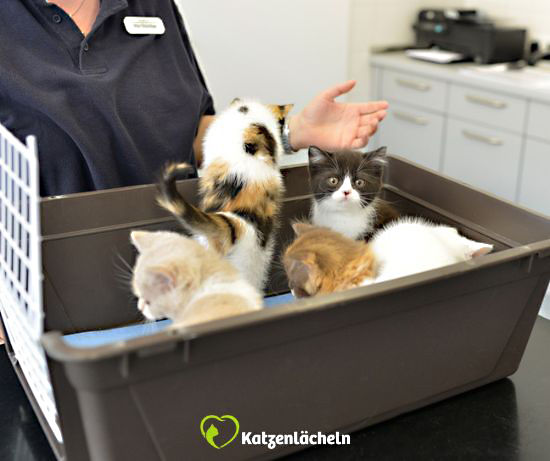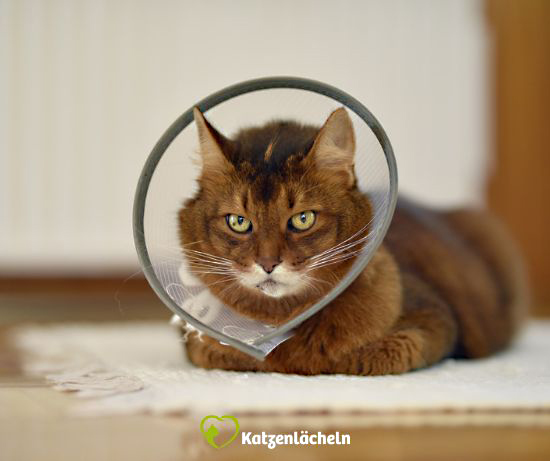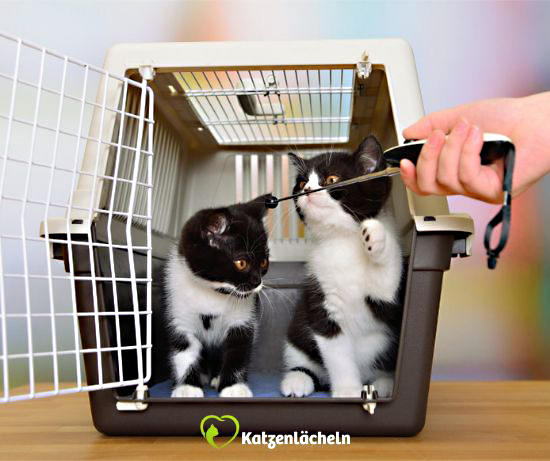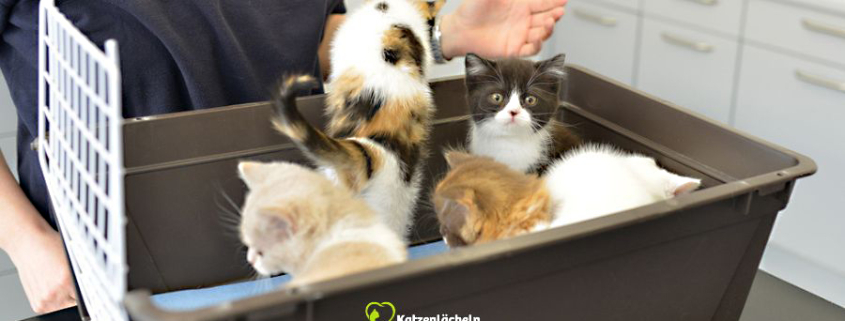7 Tips for Your Next Vet Visit with Your Cat
7 Tips for Your Next Vet Visit with Your Cat
At least once a year, we take Helli and Clärchen for a check-up. We were just there recently, but unfortunately, we’ll have to go again soon as they both need a few teeth extracted.
I noticed that Helli is experiencing problems again, which is not the first time. With Clärchen, who has severe arthritis at 18 years old, I didn’t expect it as much. It just goes to show how important it is to have regular check-ups!
Of course, both girls are senior cats; after all, Helli is already 15 years old. Naturally, I worry about how they will handle the anesthesia. On the other hand, I know how awful dental pain can be, and I don’t want to subject my furry friends to that.
As a helicopter cat mom, it helps me to be well-prepared for a vet visit. While I can’t completely eliminate their fear, there are things I can do to minimize stress. Today, I’m sharing 7 tips to help you prepare for a vet visit.

- Choosing the Veterinarian
Take your time and find a veterinarian you trust in your area before an emergency arises. Start by scheduling an appointment without your cat, so you can get to know the practice and the team. There are more and more cat-friendly clinics that take special precautions for feline patients.
- Scheduling an Appropriate Appointment
Unless you have an emergency, schedule an examination appointment during times when traffic is least congested. Check in advance for possible road closures or diversions. If possible, take time off from work and avoid additional stress due to time constraints.
Drive cautiously and play soft music if necessary. If you’re too anxious, sit with your cats in the back and have someone else drive you to the vet.
- Caution in Multi-Cat Household
If you live with multiple cats, be particularly attentive after returning from the vet. Sometimes, the unfamiliar scent of the veterinarian causes cats not to recognize each other immediately and react unfriendly. This is especially true after anesthesia. Initially, separate your cats until the treated cat is back on its paws and pay close attention when they interact. Also, immediately change all blankets and towels you took to the vet to create a familiar “nest smell” at home.
A changed appearance, such as wearing a collar, can also cause irritation. Watch closely and support your cat if tensions arise.

- Transport Carrier
Now we come to several tips regarding this important topic.
Choose your transport carrier carefully. There are pros and cons to different designs, so inform yourself thoroughly beforehand and select the transportation option that suits you and your cats best. Ensure it is of an appropriate size so your cat can comfortably lie down, which is especially important after anesthesia. Generally, carriers that open from the top are suitable. Plastic carriers are easy to clean but can be noisy when you open or close the clasps. Wicker baskets may look nice but are not always practical. As mentioned, take your time to browse and choose the right carrier.
Integrate the transport carrier into your daily routine. “Yes, but…” you might say, “What if we’re going to the vet? Won’t the carrier become a place of horror after that?” I can’t confirm that because my girls are always relieved when they can go back into their carrier at the vet’s office. And I find it wonderful that I don’t have to chase my furry friends around the apartment to get them inside!

Make the carrier comfortable. Since our Clärchen drinks a lot, I always put an incontinence pad at the bottom of the carrier and place a cozy towel or blanket on top. I also bring a trash bag and spare supplies in case of any accidents on the way.
Playfully familiarize your cats with the transport carrier, for example, using clicker training. With “medical training,” you can gradually and progressively expose your furry friends to certain situations that they may find unpleasant, such as being held, having their ears, eyes, and teeth examined, or having their claws trimmed. Medication administration can also be trained in a friendly manner. Of course, this doesn’t happen overnight and requires time, but it’s worth it!

- Take Notes
Before each vet visit, I write down what needs to be examined and which medications I may need to bring. This helps me avoid realizing at home that I forgot, for example, to have the claws trimmed at the vet’s office.
- Project Calmness
I give myself this advice every time as well. I’m always very, very excited, and naturally, my mood affects my furry friends. So, I try to relax days in advance when I notice I’m becoming restless because the appointment is approaching. The calmer and more composed we are, the easier we make it for our furry friends!
- Relaxation Aids
If your cat is extremely fearful and stressed, for example, due to having significant difficulties with car rides, talk to your veterinarian beforehand. There are supplements, Bach flower remedies, etc., that can be used for relaxation, or medications that can help your cat cope better with the vet visit and make examinations easier for both the veterinarian and your cat.
I hope I was able to provide you with some valuable tips for your next vet visit, and I wish you and your furry friends all the best!
About Katzenlächeln (Cat’s Smile)
As a cat behavior consultant, I help empathetic cat owners understand and resolve their feline companions’ problem behaviors. Together, we embark on an exciting journey to truly understand our cats and provide them with a happy and fulfilled feline life.
Compassionate interaction and knowledge of the needs of our enchanting feline friends are essential for a relaxed and harmonious daily life together.

Christiane Skuza – Katzenlächeln
Photos 1, 2, 4, 5: Kim Indra Oehne





